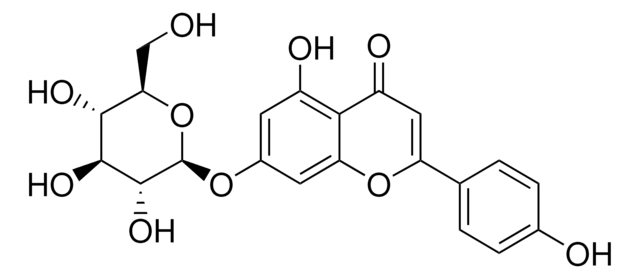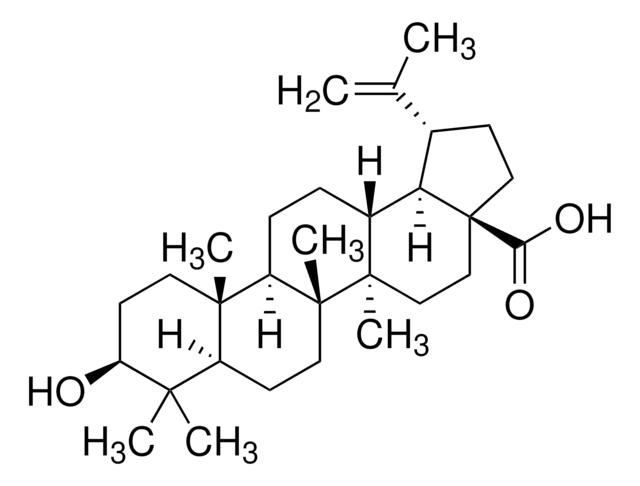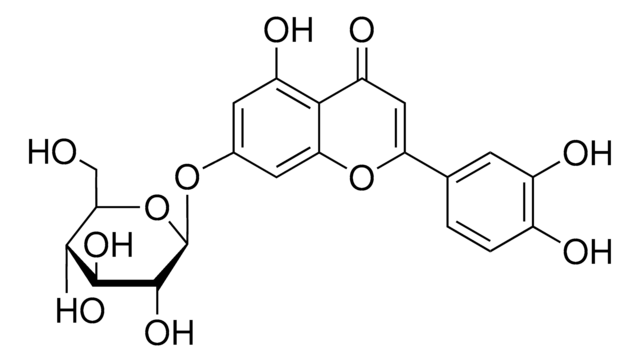42251
Apigenin
analytical standard
Sinónimos:
4′,5,7-Trihydroxyflavone, 5,7-Dihydroxy-2-(4-hydroxyphenyl)-4-benzopyrone
About This Item
Productos recomendados
grado
analytical standard
Nivel de calidad
Análisis
≥99% (HPLC)
caducidad
limited shelf life, expiry date on the label
técnicas
HPLC: suitable
gas chromatography (GC): suitable
mp
>300 °C (lit.)
aplicaciones
food and beverages
formato
neat
temp. de almacenamiento
2-8°C
cadena SMILES
Oc1ccc(cc1)C2=CC(=O)c3c(O)cc(O)cc3O2
InChI
1S/C15H10O5/c16-9-3-1-8(2-4-9)13-7-12(19)15-11(18)5-10(17)6-14(15)20-13/h1-7,16-18H
Clave InChI
KZNIFHPLKGYRTM-UHFFFAOYSA-N
¿Está buscando productos similares? Visita Guía de comparación de productos
Descripción general
Apigenin can be found in a wide range of medicinal plants such as Achillea sp., Chamomilla sp., Equisetum sp., Mentha sp., Salix sp., Salvia sp., Silybum sp., Thymus sp., Verbascum sp.
Aplicación
Acciones bioquímicas o fisiológicas
Envase
Otras notas
Código de clase de almacenamiento
11 - Combustible Solids
Clase de riesgo para el agua (WGK)
WGK 3
Elija entre una de las versiones más recientes:
¿Ya tiene este producto?
Encuentre la documentación para los productos que ha comprado recientemente en la Biblioteca de documentos.
Los clientes también vieron
Nuestro equipo de científicos tiene experiencia en todas las áreas de investigación: Ciencias de la vida, Ciencia de los materiales, Síntesis química, Cromatografía, Analítica y muchas otras.
Póngase en contacto con el Servicio técnico








